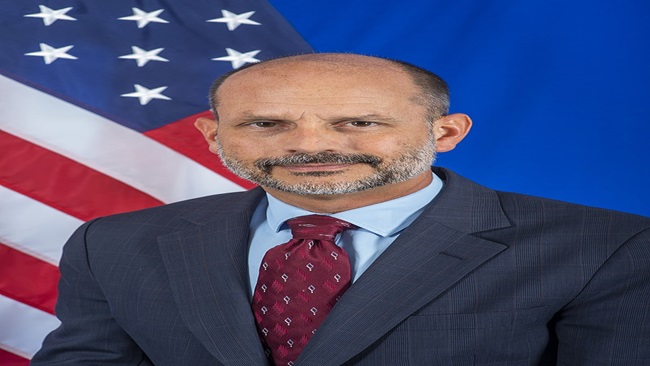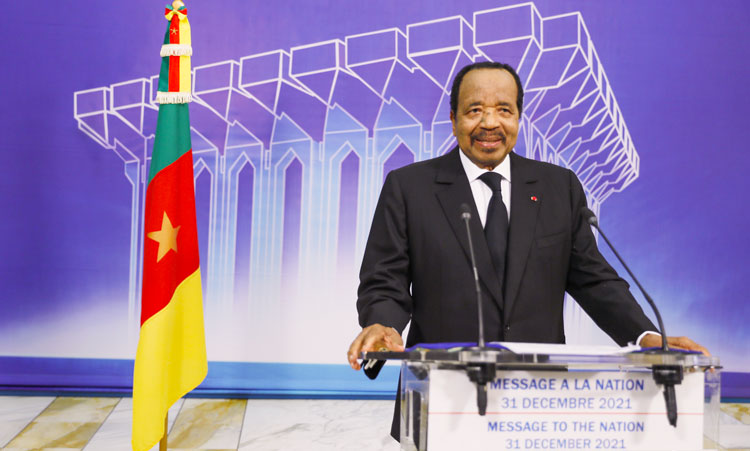Categories
Recent Posts
- Football: Real Madrid manager Ancelotti testifies in court over tax charges
- Manyu Division: Ma Nchong Stella is the new Ekandim Nkanda of Ntenako
- CPDM Crime Syndicate: Biya’s acolytes expected to fill bureau vacancies
- Yaoundé spent CFA311bn on interest payments for central government debt in 2024
- President Putin begins biggest Russian military call-up in years
Archives
- April 2025
- March 2025
- February 2025
- January 2025
- December 2024
- November 2024
- October 2024
- September 2024
- August 2024
- July 2024
- June 2024
- May 2024
- April 2024
- March 2024
- February 2024
- January 2024
- December 2023
- November 2023
- October 2023
- September 2023
- August 2023
- July 2023
- June 2023
- May 2023
- April 2023
- March 2023
- February 2023
- January 2023
- December 2022
- November 2022
- October 2022
- September 2022
- August 2022
- July 2022
- June 2022
- May 2022
- April 2022
- March 2022
- February 2022
- January 2022
- December 2021
- November 2021
- October 2021
- September 2021
- August 2021
- July 2021
- June 2021
- May 2021
- April 2021
- March 2021
- February 2021
- January 2021
- December 2020
- November 2020
- October 2020
- September 2020
- August 2020
- July 2020
- June 2020
- May 2020
- April 2020
- March 2020
- February 2020
- January 2020
- December 2019
- November 2019
- October 2019
- September 2019
- August 2019
- July 2019
- June 2019
- May 2019
- April 2019
- March 2019
- February 2019
- January 2019
- December 2018
- November 2018
- October 2018
- September 2018
- August 2018
- July 2018
- June 2018
- May 2018
- April 2018
- March 2018
- February 2018
- January 2018
- December 2017
- November 2017
- October 2017
- September 2017
- August 2017
- July 2017
- June 2017
- May 2017
- April 2017
- March 2017
- February 2017
- January 2017
- December 2016
- November 2016
- October 2016
- September 2016
- August 2016
- July 2016
- June 2016
Featured
Most Commented Posts
 4 Anglophone detainees killed in Yaounde
4 Anglophone detainees killed in Yaounde
18 comments Chantal Biya says she will return to Cameroon if General Ivo Yenwo, Martin Belinga Eboutou and Ferdinand Ngoh Ngoh are sacked
Chantal Biya says she will return to Cameroon if General Ivo Yenwo, Martin Belinga Eboutou and Ferdinand Ngoh Ngoh are sacked
13 comments The Anglophone Problem – When Facts don’t Lie
The Anglophone Problem – When Facts don’t Lie
12 comments Anglophone Nationalism: Barrister Eyambe says “hidden plans are at work”
Anglophone Nationalism: Barrister Eyambe says “hidden plans are at work”
12 comments Largest wave of arrest by BIR in Bamenda
Largest wave of arrest by BIR in Bamenda
10 comments
Latest Tweets
Featured
-

Football: Real Madrid manager Ancelotti testifies in court over tax charges
-

Manyu Division: Ma Nchong Stella is the new Ekandim Nkanda of Ntenako
-

CPDM Crime Syndicate: Biya’s acolytes expected to fill bureau vacancies
-

Yaoundé spent CFA311bn on interest payments for central government debt in 2024
-

President Putin begins biggest Russian military call-up in years
-

Niger’s junta withdraws from Lake Chad anti-Boko Haram force
-

Former Nigerian head of state Obasanjo to invest $700mln in Kribi
© Cameroon Concord News 2025





1, August 2024
Rome: New report suggests long-term worries for Vatican finances 0
by soter • Headline News, Religion, World
A new analysis of the Vatican’s financial situation by an Italian news outlet contains both good and bad news for papal finances, pointing to relative success in efforts to contain ballooning deficits but also seemingly irreversible long-term declines.
According to an overview of the most recent financial data published July 26 by La Repubblica, Italy’s most widely read daily newspaper, the Vatican’s annual operating deficit grew by roughly $5.4 million in 2023, a lower figure than in past years. The report suggested the result was due to the impact of both spending cuts and also efforts to generate more realistic appraisals of the value of Vatican properties.
Among the cost-cutting measures adopted in recent years include new limits on hiring and contracting, as well as efforts to increase the rents collected on some Vatican properties which are leased commercially and to put others up for sale.
The report cited a recently completed financial statement approved by the Vatican’s Council for the Economy, led by German Cardinal Reinhard Marx. According to the report, the deficit for 2023 amounted to over $90 million, with income of $1.25 billion and expenses of $1.34 billion.
Income in 2023 actually grew by $30 million, according to the financial statement, but expenses also went up by $36 million due to the impact of inflation.
The statement also indicated that the size of the 2023 deficit could still shrink somewhat depending on what the actual performance of the Vatican’s investment portfolios match projections.
The Repubblica analysis also found that income from the annual Peter’s Pence collection, which supports the works of the pope, amounted to $52.5 million in 2023, an increase over the $47.2 million collected in 2022.
Nonetheless, the net gain from the collection was offset by the fact that the fund’s reserves were once again draw upon in 2023 to support the Roman Curia, the Vatican’s chief administrative bureaucracy, to the tune of almost $98 million.
Moreover, the long-term trend in income from the fund is clearly downwards. According to the Repubblica analysis, collections dropped 23 percent overall from 2015 to 2019, and are poised for further reductions.
To some extent, those declines may be related to financial scandals, such as the aborted $400 million purchase of a former Harrods warehouse in London that resulted in the criminal convictions of nine figures for fraud, including Italian Cardinal Angelo Becciu. Given that Peter’s Pence also is sometimes viewed as a referendum on the popularity of the current pope, various controversies surrounding Franci may also have had an impact.
More basically, however, most observers believe the core factor is that much of the Peter’s Pence income derives from wealthier nations, where Catholic populations, and therefore Catholic giving, have been in decline for decades.
Declines in income are especially worrying for Vatican accountants today, given concerns about an aging workforce and unfunded pension obligations down the line. There’s also alarm that rising costs and declining income could eventually compel the Vatican to either trim its payroll or cut salaries, or both, at time when both the volume and the complexity of the workload from around the world is increasing rapidly.
The financial statement reportedly approved by the Council for the Economy concerns the Holy See, and mostly excludes both the Government of the Vatican City State, which is responsible for administration of the physical territory – including income, for example, from the Vatican Museums – and also excludes the Institute for the Works of Religion, the so-called “Vatican bank,” which for 2023 showed $33.2 million in income and a total of $5.9 billion in client assets.
However, it’s considered improbable that income from either the city state or the IOR will be sufficient in coming years to offset the Vatican’s broad deficits, leaving it unclear for the moment how the losses will be sustained.
Source: Crux